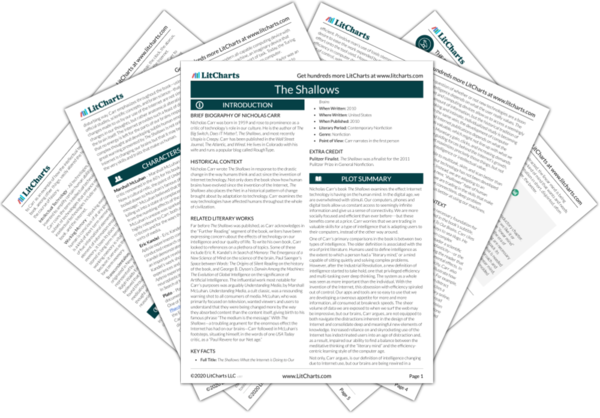To begin a conversation about memory, Carr returns to
Plato’s
Phaedrus. In the
Phaedrus, ancient orator Socrates warns that writing might cause people to be dependent on books and weaken their memories. Socrates’ fear, as Italian novelist Umberto Eco points out, was a natural and ancient one, “an eternal fear: the fear that new technological achievement could abolish or destroy something that we consider precious, fruitful, something that represents for us a value in itself, and a deeply spiritual one.” Socrates may have been right in part. However, Carr argues that books have historically freed people to chart an individual path of learning, and that books are responsible for man’s heightened focus on individuality.
